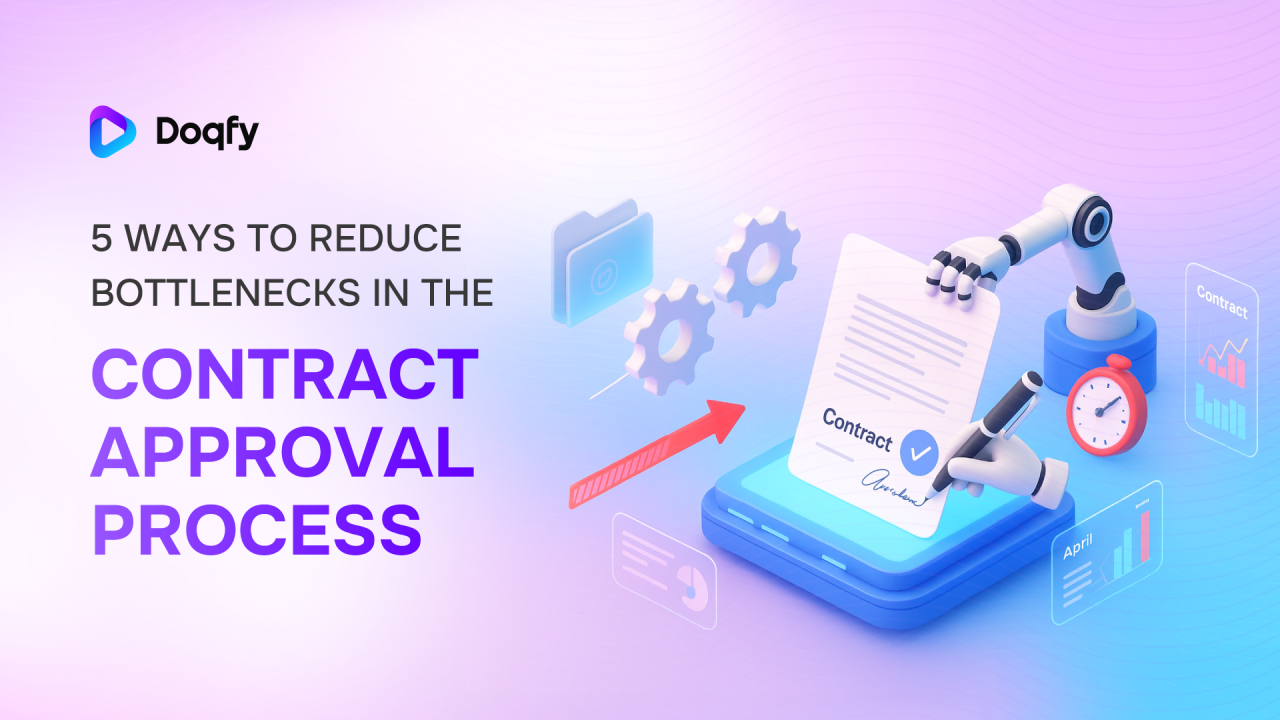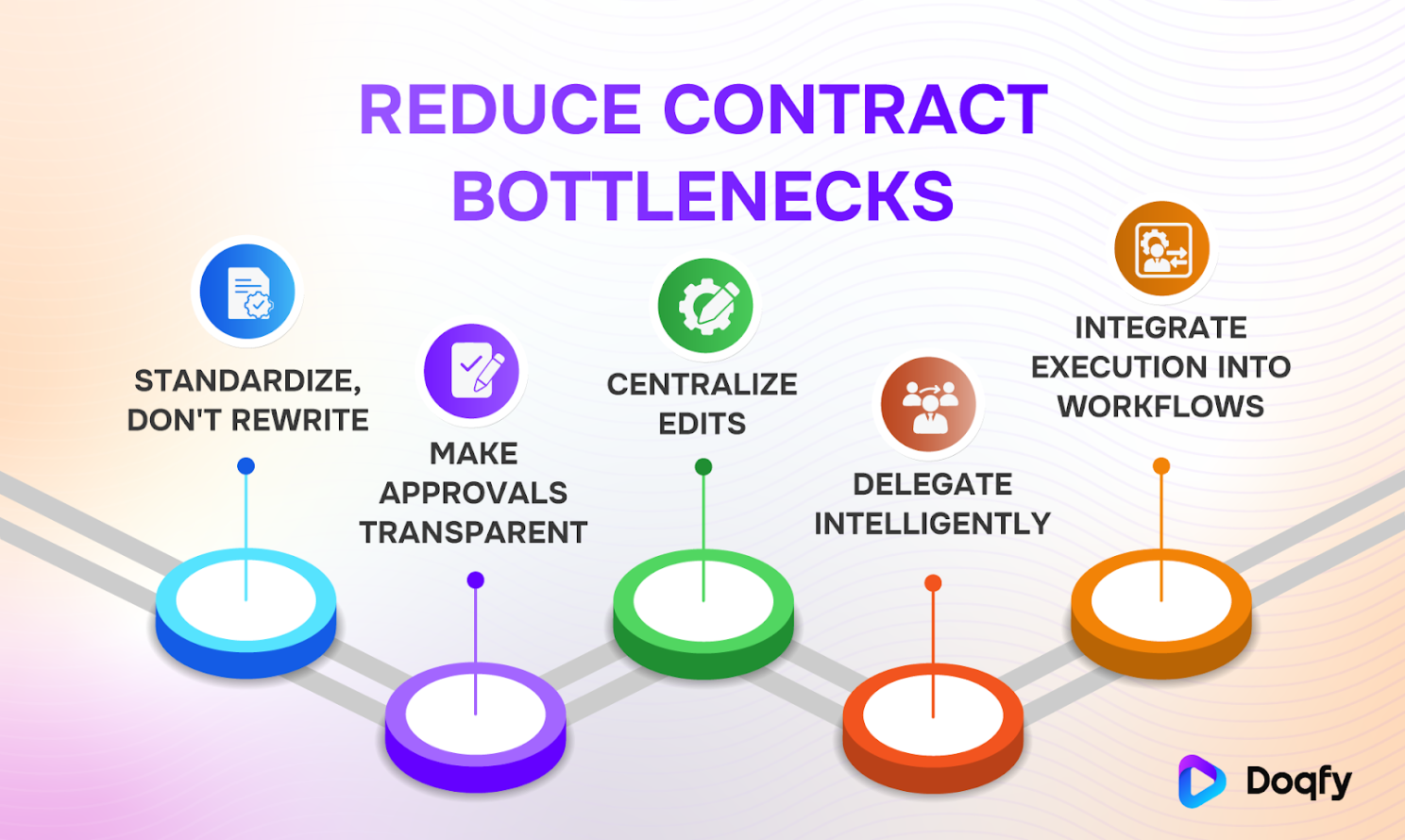5 Ways to Reduce Bottlenecks in the Contract Approval Process
Time to give your business a much-needed digital boost

Contract approvals are a make-or-break moment for business operations.
Whether you're finalizing a vendor agreement, closing a customer deal, or issuing a compliance-related document, every contract must go through reviews and approvals before it can be signed.
But all too often, that review cycle gets stuck. Contracts sit in inboxes. Approvals get delayed. And what should be a straightforward process becomes an operational roadblock that slows down outcomes across teams.
Here’s the good news: Most delays don’t stem from the contract itself, but from how approvals are managed. With the right structure and tools, this phase can be dramatically improved.
Why Do Bottlenecks Happen in Contract Approval?
Surprisingly, legal risk or negotiation deadlocks are rarely to blame for contract delays. Instead, they are caused by poor internal workflows. From unclear ownership to redundant back-and-forth, the approval phase often takes more time than drafting or negotiation.
Fortunately, this is also the part of the contract lifecycle that’s the easiest to optimize with the right structure and tools in place.
Here are five practical ways to reduce these delays and make your contract approvals more efficient. Each of these steps is supported by Doqfy’s contract automation platform, which helps teams improve accuracy, compliance, and speed without relying on patchwork tools or manual workarounds.
Five Ways to Reduce Contract Bottlenecks

Automated contract lifecycle management platforms are built to help teams maintain accuracy, compliance, and speed without depending on scattered tools or manual fixes.
Here are five practical ways to reduce these delays and streamline contract approvals:
1. Standardize, Don’t Start From Scratch
Every contract begins with a blank document or outdated template. Legal teams spend hours reworking boilerplate terms, verifying clause language, and ensuring formatting consistency.
Do this instead: Standardize frequently used contract types with structured templates and clause libraries. Having a predefined starting point removes redundant drafting and review cycles.
2. Bring Clarity to Approvals
A survey of 200 business professionals found that 31.3% of businesses cite contract approval delays as a frequent issue that disrupts operations and impacts revenue generation. This happens because there’s no clarity on who needs to approve, when, or why. Contracts bounce between departments or are forgotten in inboxes.
Do this instead: Define a sequential approval structure. Identify approvers by contract type, value, or risk, and notify them in order.
3. Centralize Edits and Comments
Feedback lives scattered across email threads, PDFs, chat apps, and offline notes. Teams waste time reconciling versions and tracking who said what. Inefficient workflows can delay contract cycles by 3 to 4 weeks, affecting sales, hiring, and vendor onboarding timelines.
Do this instead: Move collaboration to a single platform where edits, comments, and approvals are visible and logged.
4. Empower Teams With Guardrails
Deloitte found that 48% of businesses experience customer dissatisfaction due to delays in the agreement process. Delegation with oversight can help avoid these breakdowns.
Business teams rely on their legal teams for every small change, even when edits are routine. The legal teams end up reviewing low-risk contracts line by line.
Do this instead: Define rules that allow non-legal teams to manage standard edits within approved parameters. Legal team steps in only when exceptions arise.
5. Close the Loop with Integrated Execution
Reports show that delayed renewals and approvals can result in lost revenue, missed milestones, and penalties, affecting long-term financial stability.
Even after approvals, final steps often involve switching between e-signature tools, uploading to drives, or chasing down stamps. These final-stage delays introduce errors and create risk.
Do this instead: Consolidate contract execution into one unified system. Signing, stamping, and storing should all happen in one workflow.
Conclusion
Even perfectly written contracts get stuck if your approval process isn’t built for speed. These delays cost time, money, and momentum.
Automated contract lifecycle management solutions like Doqfy are built to help you remove the friction without compromising oversight. From standardized templates to eSignatures, stamping to storage, each element is designed to remove unnecessary steps and improve coordination between teams.
Explore how Doqfy can help you speed up your contract approval process using AI-assisted Contract Lifecycle Management aka CLM: Book a demo today.

